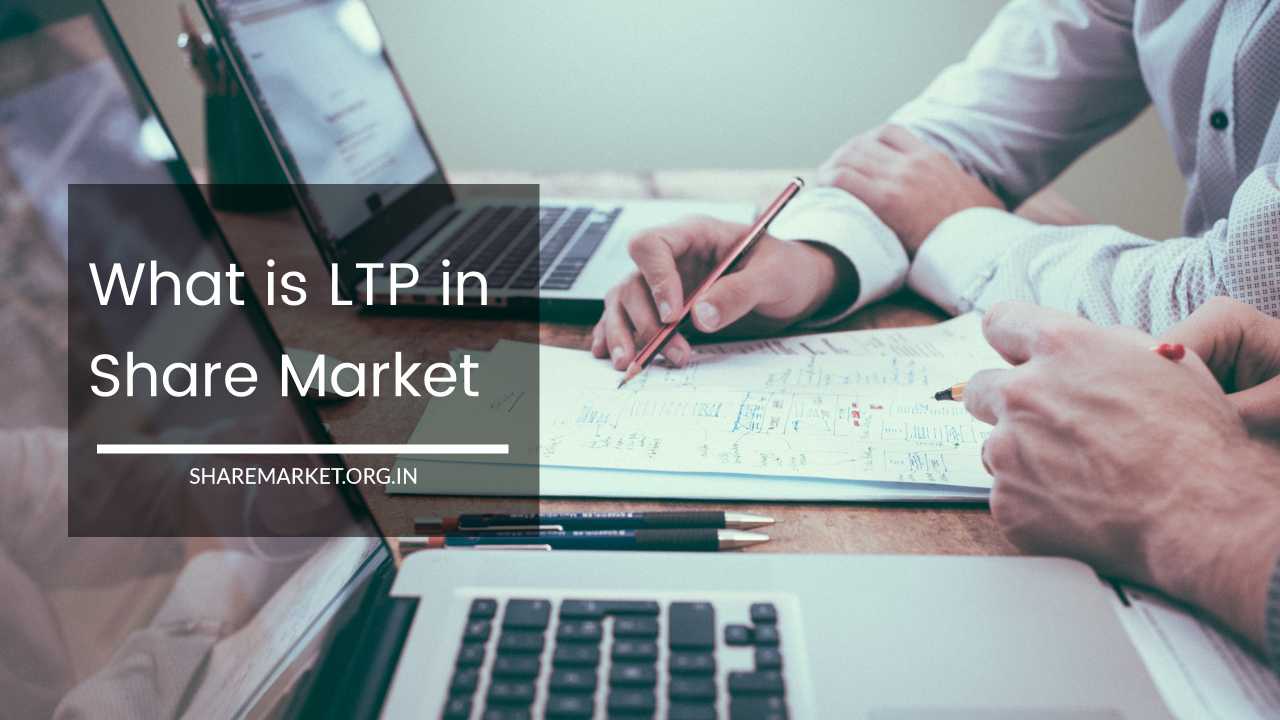What is LTP in Share Market

What is LTP in Share Market
LTP in Share Market: Understanding the Last Traded Price
Stock prices are dynamic and constantly fluctuate based on the demand and supply among buyers and sellers in the market.
Sellers determine the asking price at which they are willing to sell their shares, while buyers make bids by offering the price they are willing to pay for the stock, known as the bidding price.
The stock exchanges match these rates, resulting in a mutually agreed-upon price, which is called the Last Traded Price (LTP).
The LTP is continuously updated in real-time as transactions occur throughout the trading day. It is influenced by factors such as market liquidity, demand, and supply.
The LTP represents the price at which the most recent trade or transaction took place. It is useful in understanding how stock prices have fluctuated in the past and can provide insights into potential future price movements.
However, it’s important to note that the LTP changes with each successful trade and is only active for a very short duration, typically fractions of a second.
Therefore, it cannot be relied upon as a definitive measure for setting the future selling price of stocks.
Nonetheless, the LTP can be used to assess the perceived value of a stock and estimate the potential price range based on its historical trading patterns.
In simple terms the LTP, or Last Traded Price, in the market refers to the price at which the stock was last sold when the trading session for a particular day concluded.
The LTP represents a lump-sum transaction that takes place in the stock market. It involves a buyer and a seller entering into a contract where the seller agrees to sell a fixed number of shares at a predetermined price on a specified date. The transaction value is determined based on the number of shares involved.
For those seeking quick gains in the stock market without engaging in continuous trading, the LTP provides an alternative option.
The LTP reflects the last price at which shares were traded during the trading session for that specific day. It typically ends with decimal points such as .00, .01, .02, and so on.
It’s important to note that the LTP does not account for any bonus issues or dividends declared on that particular day.
It solely represents the last traded price for the specific day and can be likened to the closing price or end-of-day price for an individual stock, which becomes known after the market closes.
Factor That Determine LTP
The trading volume of stocks, which represents the number of shares being bought and sold, is an important factor in determining the LTP (Last Traded Price). It plays a crucial role in estimating the proximity of the asking price to the LTP.
When the trading volume of stocks is higher, it indicates that the stock is less volatile and less susceptible to significant market fluctuations.
This allows buyers and sellers to set their shares’ ask and bid prices more confidently.
It is important to note that the LTP can only be determined when an actual transaction occurs. It is purely subjective to the last price at which investors exchanged stocks, reflecting the most recent transaction price.
How is LTP Calculated?
LTP (Last Traded Price) can be likened to a commodity in the stock market, where the price is determined by stock traders who act as consumers.
Both the sellers and buyers in the stock market are considered consumers as they engage in trading activities. When a trader intends to sell their shares, they will place a sell order at a desired price based on the current price and performance of the share.
If another trader places a purchase order that matches the sell order, the transaction is executed, and the price at which the stock was sold becomes the last traded price.
Importance of LTP
The Last Traded Price (LTP) serves as a reference price in the stock market, allowing traders to set their ask and bid prices. It is crucial for traders to determine and stay informed about the LTP of a particular stock.
Numerous trading websites provide market depth tables that display the recent trading history and prices of the stock.
Analyzing the LTP trends can help traders identify patterns and make informed trading decisions based on the current market conditions and the LTP in the stock market.
What is the Effect of LTP on Stock Prices?
The conventional belief is that markets are efficient, meaning they swiftly and accurately factor in all available information into stock prices.
However, if this were entirely true, there would be no correlation between the last transaction and the average trade.
One explanation for this is that investors may not have the capacity or ability to analyze all available information or properly weigh different types of data.
Consequently, their previous experiences with other stocks and familiarity with the involved companies would influence what they already know about other investors’ perspectives.
In such cases, investors may not require new information from the company because they rely on their past experiences with similar situations.
Due to limitations in buying or selling large volumes of shares at once, individual investors typically trade in smaller quantities.
The process of one individual selling their shares and another purchasing them is known as market-making, which is essential for maintaining an orderly functioning market.
Final Words
There is often confusion about whether the closing price of a stock is the same as the Last Traded Price (LTP).
Technically, the LTP and the closing price of a stock are indeed the same. However, trading volumes, particularly in the final hour of the trading day, can have an impact.
During this time, there is usually a surge in trading activity, and some orders may be processed a few minutes after the market has officially closed.
As a result, while the closing price considers orders placed before the market closure, it may not account for orders processed after the closing time.

















